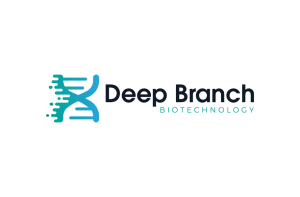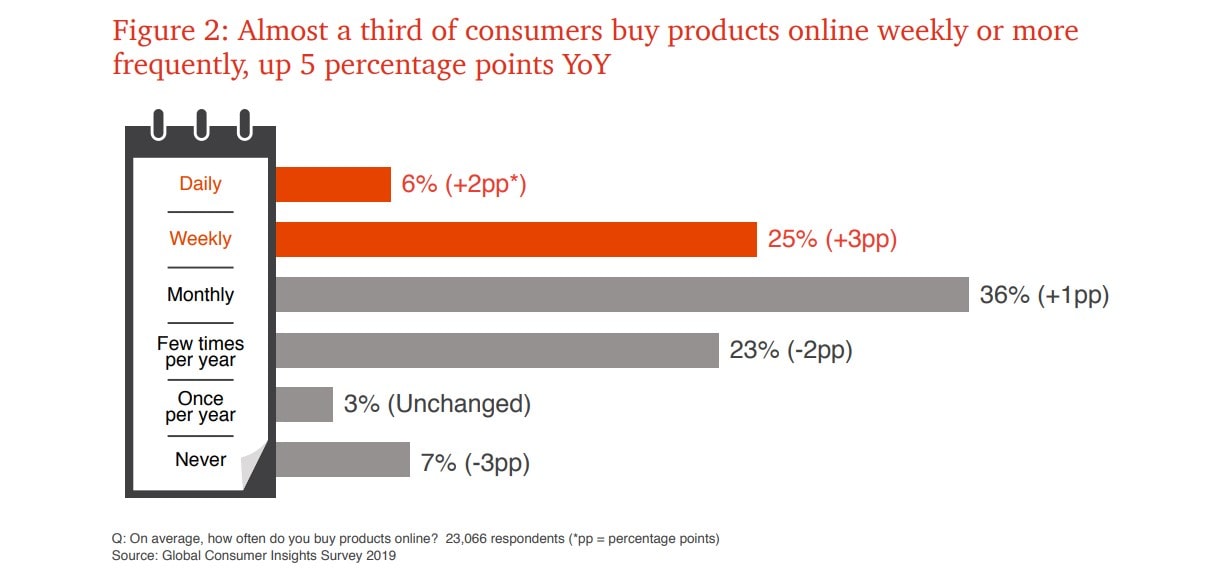Olga Turner Baker (Ekkist) – Designing Homes For Your Wellbeing
Olga Turner Baker is the co-founder and director of Ekkist, a consultancy providing design advice on health and wellbeing in the built environment.
She is a Chartered Surveyor and WELL Building Standard™ Accredited Professional and has been included in 2019 Forbes 30 under 30.
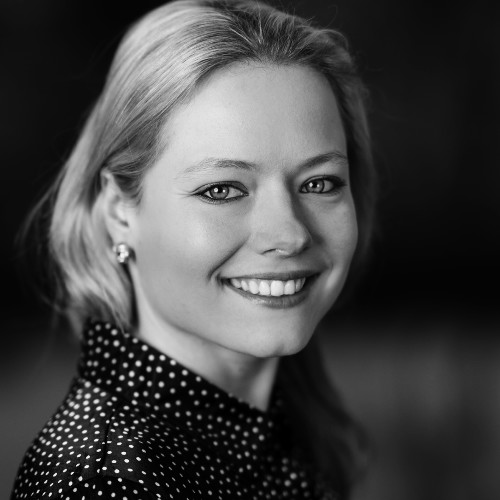
Olga Turner Baker / linkedin.com
I’m no architect, but I enjoy a beautifully designed home like anyone else. I learned about sustainable homes when I interviewed Mihai Toader-Pasti, but the concept of designing homes to human wellness principles was new to me.
Learn more: Building Healthy Homes – The WELL Building Standard

The Ori House by Ekkist / ekkist.co
Since Olga Turner Baker is a WELL Building Standard™ Accredited Professional, I reached out inviting her to share her story with us.
1. You design houses which improve the health and wellbeing of their occupants by following the WELL Building Standard™ principles. When did you decide to dedicate your career to building healthy houses?
I have always been interested in ways in which we can improve the design and build quality homes. I came across the WELL Building Standard at a conference and was instantly inspired and thought: why aren’t we building places in this way already? There is a huge amount of medical research outlining how we can create healthier places to live and work but very little practical application of this. I wanted to change this.
2. The WELL Building Standard is fairly new. Were there any challenges implementing its principles?
The WELL Building Standard is still fairly new, particularly in the UK, but it is a growing global movement gaining huge traction. The main challenges are as with any early adopters: providing enough evidence that this will improve build quality and add value for developers and landlords, taking examples of where it has worked well and encouraging those to be applied more widely.
3. Share with us your vision of the future.
As evidence of the benefits of creating healthy buildings grows, designing and constructing buildings in this way will become the norm. The WELL Building Standard will encourage the industry to be more mindful of the materials used in construction and of the human aspects of design, changing the way we build forever.
Join the Conversation
We’d love to hear what you have to say.
Get in touch with us on Facebook Group and Twitter.
2019 Webby Awards – 3 Winners in Brand Strategy & Experience Marketing
Established in 1996, The Webby Awards is honouring the best of the internet.
The 23rd Annual Webby Awards received 13,000 entries from 70 countries and all 50 states and generated over 9 billion media impressions worldwide.
Here are 3 winning campaigns in the Brand Strategy & Experience Marketing categories:
1. Burger King – the Whopper Detour
The competition between Burger King and McDonald’s began over sixty years ago. With the advent of the internet, these two giant fast-food restaurant chains brought their rivalry into digital. Both Burger King and McDonald’s have entered the creative race where each of them is looking for the next most creative marketing campaign to earn media buzz, fans attention and sales.
The Whopper Detour campaign is a great example of beacon marketing.
Beacon marketing is a form of communication between brands and their consumers based on beacon technology.
You can read all about this technology here: How can Beacon Digital Marketing Help Your Retail Business Thrive?
Using this technology, Burger King essentially turned 14.000 McDonald’s locations into Burger King restaurants.
Pretty smart, right?
According to official statements, it took Burger King almost a year to prepare the promotion. The campaign is entirely reliant upon technology (beacon technology, the app) so it was vital to the campaign’s success that everything goes smoothly.
Campaign goal:
Get people to download the Burger King app.
Campaign results:
- 50.000 Twitter mentions;
- Going from #686 to #1 in the app charts in 48 hours;
- 1.5 million downloads in 9 days;
- 3.3 billion impressions;
- Mobile sales 3x during promotion and 2x after the promotion ended;
- Highest store traffic in 4 years.
The Whopper Detour campaign won in the Advertising & Media Category for Brand Strategy.
2. One Strange Rock – Astronaut Reality Brand Experience
One Strange Rock is a TV-series documentary filmed by Hollywood movie director Darren Aronofsky and hosted by Will Smith.
The documentary explores the fragility and wonder of planet Earth by following eight astronauts who share their unique perspective on our planet.
But this experience is quite exclusive, isn’t it? Only 536 people have been to space.
To launch the show, the team at McCann NY asked themselves the following question: what could we do to allow other people – people who will never be astronauts – to enjoy a similar experience?
Learn more: These 7 Brands Used Augmented Reality Creatively
To answer this question they came up with the Astronaut Reality Helmet, which provides users with one-of-a-kind VR space experience.
Campaign goal:
Raise media attention.
Campaign results:
- 312 million impressions;
- 47 pieces of press coverage;
- over 457 social shares;
- 1.27 billion readers online;
- One Strange Rock viewership was 13% higher than the channel’s non-fiction average performance.
The Astronaut Reality Brand Experience won the People’s Choice Award in the Experience Marketing category.
3. Carlings – ADDRESS_THE_FUTURE
There are digital influencers on Instagram with millions of followers promoting real-life clothes. Miquela, a non-human influencer is one example.
How about real-life influencers promoting digital clothes?
Norwegian retailer Carlings took this idea and turned it into reality.
The brand designed a digital clothing line to illustrate its brand values: sustainability and fashion creativity. The clothing line is a collaboration between the brand and CGI model Perl and includes various fashion pieces: jeans, vests, jackets and coats at prices ranging between 10 euro to 30 euros.
With this digital line of clothes – called Neo-Ex, Carlings helps its customers share their style online – via 3D rendering – without leaving a negative footprint on the world.
With this project, we wish to challenge ourselves and the entire industry into taking the next step. We really believe it’s an interesting issue to address – do all clothes need to be physical?
Carlings
Campaign goal:
Raise awareness of water consumption in the clothing industry
Campaign results:
- +25 pieces of press coverage;
- +10k impressions for the Instagram post announcing the launch of the clothing line.
The ADDRESS_THE_FUTURE campaign won the Webby Award in the Experience Marketing category.
Join the Conversation
We’d love to hear what you have to say.
Get in touch with us on Facebook Group and Twitter.
3 Social Entrepreneurs Having an Impact on the World
A social entrepreneur is a person who identifies a pressing social problem and finds an innovative solution to solve it while having a positive impact on the world at large.
Here are 3 social entrepreneurs changing the world for the better:
1. Dirk Müller-Remus – Changing the lives of autistic adults

Dirk Müller-Remus
There are around 7 million people with autism in the EU and 76% – 90% of adults with autism are unemployed according to the latest reports.
Although autism affects a person’s ability to interact with the people around them, autistic persons display innate abilities and skills: attention to detail, enjoying repetitive tasks, lack of tolerance for errors, persistence and loyalty.
Businesses could employ persons with autism to work on tasks such as software testing, programming and data-entry. Unfortunately, such opportunities for high-quality work have gone to waste due to autistic people’s high rate of unemployment.
Dirk Muller-Remus set out to change that. In November 2011 he founded Auticon, the first enterprise that exclusively employs adults on the autism spectrum as IT consultants.
Inspiration for the company came when Mr Müller-Remus’ son was diagnosed with Asperger’s. Mr Müller-Remus was dismayed by the lack of employment prospects on offer for autistic people and decided to build a company which created long term sustainable jobs for adults on the autism spectrum.
Auticon is based on the traditional IT consultancy model: highly talented experts are employed by the company on a permanent basis. Each individual’s skill set is matched to a specific client assignment. Auticon’s consultants and clients are offered the support of in-house job coaches who ensure that the consultants’ work environments enable them to deliver to their full potential.
The team at Auticon UK / facebook.com
Learn more: Make Your Workplace More Accessible To Employees With Autism
2. Briac Barthes – Bringing clean and affordable energy to people in Africa

Briac Barthes
Co-founder and CEO at hiLyte, a Swiss-based startup, Briac Barthes and his team bring clean and affordable energy to people in Africa through their innovative solution – the Iron Battery.
The Iron Battery provides cheap clean energy for people who still use kerosene for lighting. The hiLyte battery produces enough power to charge a phone and give light to a room for one night. All the consumables are non-toxic and easy to find everywhere on Earth: iron, paper and iron salt.
Iron is the most abundant electrochemical material, paper is fully biodegradable, and iron salt is already used as fertilizer in a lot of places.
All of this makes it possible for the users to dispose of the used solution in the ground without harming the environment.
To date, the Iron Battery saved 44 kgs of carbon emissions and impacted 50 people.
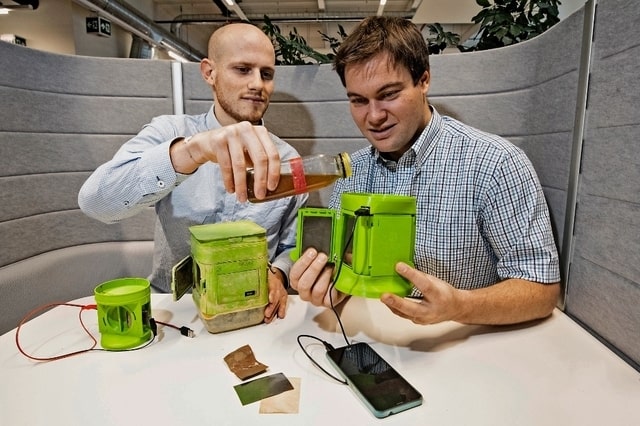
Briac Barthes and David Lambelet, co-founders of hiLyte showing how the Iron Battery is working/tdg.ch
Learn more: Briac Barthes – Driving Change Through Social Entrepreneurship
3. Asha Patel – Helping individuals with their emotional and mental health

Asha Patel
According to the World Health Organization, mental disorders affect 1 in 4 people.
Experts estimate around 450 million people currently suffer from such conditions, placing mental disorders among the leading causes of ill-health and disability worldwide (source).
A vast majority of them find themselves unable to live with their mental health problems.
Working in mental health services, Dr Asha Patel experienced this situation first-hand which prompted her to found her company, Innovating Minds.
Innovating Minds is a social enterprise that cares about helping individuals with their emotional and mental health throughout education, training and employment.
She created a model that lets children and adults access expert help more quickly. The community interest company has grown rapidly and the team are working nationally and with international partners. The team include clinical psychologists who deliver specialist accessible psychological support within education and the community.
Company’s mission is to equip individuals with skills to live with their mental health problems enabling them to engage in education, training and employment.
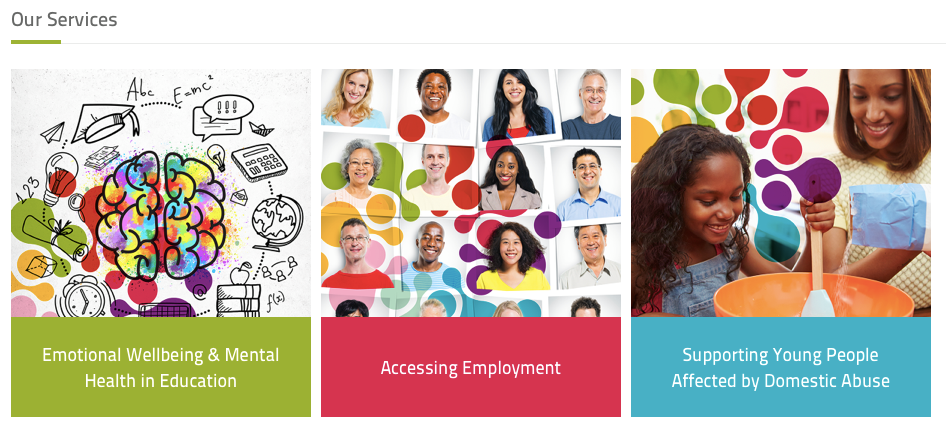
Facebook.com/innovatingmindscic
Learn more: Along the Road to Great Mental Health: Debunking the Myths & Stigma
Join the Conversation
We’d love to hear what you have to say.
Get in touch with us on Facebook Group and Twitter.
Turning CO2 From Polluter To Producer
Our world is growing at a fast pace. We sustain its rapid development rate by feeding it with energy.
According to the International Energy Agency, last year the global energy consumption doubled the average annual rate of the previous seven years.
This resulted in global carbon emissions growing to a record high in 2018.
Fossil fuels accounted for almost 70% of growth and coal was now the biggest single source of global warming.
The countries generating the biggest energy demand are the world’s top 3 largest economies: China, India and the US with 70% of the increase in total world energy demand.
On the upside, wind and solar saw double-digit growth last year but was not enough to meet the world’s needs.
Another negative factor is the slowdown of investment in clean energy which decreased by almost 10% last year.
Also, our pace to change to clean energy slowed down to the lowest rate for five years.
As you can see, today we are doing a bad job of controlling carbon emissions and limiting pollution.
We are harming our environment and our planet. We are jeopardizing our future essentially.
Turning carbon dioxide (CO2) from a polluter to a producer
All is not lost. New solutions are designed to make sure our future is brighter than our present.
The team at Deep Branch Biotechnology has found a new way to deal with carbon emissions.
Their solution helps companies who want to reduce their carbon footprint without impacting negatively on operational costs.
The solution is biological and takes the recycling process one step further.
What is the solution?
The solution designed by Deep Branch Technology is a biological process in which carbon dioxide is collected and converted into sustainable protein.
The conversion takes place by using the company’s proprietary gas fermentation process.
Benefits:
- It requires minimal labour and land, and no sunlight;
- It’s scalable due to its modular design;
- The product (single cell protein) is clean, nutritious and sustainable;
- It reduces the carbon footprint of emitters;
- It provides sustainable alternatives to soy and fishmeal for the feed industry;
- The process is fueled by renewable energy (wind-power);
- The product’s price doesn’t change because it isn’t affected by seasonal variability;
- The process can scale vertically and has low labour costs.
Join the Conversation
We’d love to hear what you have to say.
Get in touch with us on Facebook Group and Twitter.
3 Mindful Steps To Making Better Decisions
Do you feel your toxic thoughts influence you into making poor decisions?
Do you believe it’s time you improved your decision-making process?
This article is about discovering 3 mindful steps which you can use to make better decisions.
But first, what is mindfulness?
Mindfulness is the ability to pay attention to your thoughts and feelings without getting carried away by them.
![]()
Learn more: How Mindfulness Can Help You Become A Better Leader
![]()
Here are 3 mindful steps that you can take to help you make better decisions as described by Dr Russ Harris, therapist and coach:
- Defuse
- Accept
- Be in the moment
Russ Harris is the author of ACT Made Simple, a quick-start guide to Acceptance and Commitment Therapy (ACT).
With Acceptance and Commitment Therapy, “clients learn to stop avoiding, denying, and struggling with their inner emotions and, instead, accept that these deeper feelings are appropriate responses to certain situations that should not prevent them from moving forward in their lives.” (psychologytoday.com).
ACT is mindfulness-based therapy.
Let’s go through each step and see what it’s all about.
1. DEFUSE
The cognitive fusion you are not aware of
Before we defuse we need to understand what cognitive fusion is.
Dr Russ Harris says that cognitive fusion is a mental state in which we are inseparable from our thoughts, we are one with our thoughts.
What does it mean?
Think of the coin: it has two sides. You cannot separate one side of the coin from the other. They are equal: neither one of them overpowers the other.
Unfortunately, we are not coins, our emotions overpower our minds and influence our behaviour.
In a state of cognitive fusion, we’re inseparable from our thoughts: we’re welded to them, bonded to them, so caught up in them that we aren’t even aware that we are thinking….
Cognitive fusion basically means that our thoughts dominate our behaviour. Thus in ACT, we may talk with clients of being “pushed around by your thoughts” or “allowing thoughts to tell you what to do,” or we may talk of thoughts as bullies, or we may compare the mind to a fascist dictator, or we may ask, “What happens when you let that thought run your life?”
Similarly, when our thoughts dominate our attention, we often talk about being “hooked,” “entangled,” “caught up,” or “carried off” by them.
Russ Harris, an excerpt from ‘ACT made simple’
Mindfulness – From autopilot to being in the moment
Before you do anything – stop and take a deep breath. Don’t talk, don’t react in any way.
Your emotions are overwhelming so at first, you won’t be able to stop, you will get through the motions as always.
But at least now you have this little idea in the back of your head which tells you I need to stop.
You won’t be able to steer yourself into a different direction the second time, the third time, but at one point, provided you set yourself to achieve this goal, you will be victorious.
Because that’s exactly what this is – a victory.
A victory over your autopilot mode, your old habits, your empowering emotions. Stopping before anything else is the hardest, but it is a necessary step towards making better decisions.

Separate yourself from your thoughts
Now that you’ve stopped before going any further, take a step back and detach from your negative internal monologue.
See your unhelpful thoughts for what they are – only thoughts, not traits of personality (you are not a loser, you just made one mistake in a particular situation).
Separate from your thoughts, don’t allow yourself to get caught up in them or pushed around by them.
The solution is not to struggle to get rid of your toxic thoughts.
![]()
Learn more: These toxic thoughts are holding you back
![]()
The solution is to notice them, become aware of their nature and then let them go past you as if they were waves in the sea.
You learn how to step back and watch your thinking, so you can respond effectively – instead of getting tangled up or lost inside your thinking.
Russ Harris, an excerpt from ‘ACT made simple’
2. ACCEPT
Don’t struggle with pain, allow it to be.
We don’t want to suffer so we do whatever it is in our power to avoid pain.
It’s perfectly human. We learned to avoid fire because it burns; we learned to handle knives with care because they cut.
It’s the same with emotional suffering. We struggle to get rid of painful feelings and sensations. But emotional suffering doesn’t go away and doesn’t heal on its own.
So we need to embrace our painful feelings, open up and make room for them.
This step is about learning how to stop struggling with them, giving them space, but don’t allow ourselves to be overwhelmed by them.
[…] the more you can open up, and give them room to move, the easier it is for your feelings to come and go without draining you or holding you back.
Russ Harris, an excerpt from ‘ACT made simple’

3. BE IN THE MOMENT
Look at the world with open eyes
Remember when you were a child? You were living the moment, undisturbed by negative thoughts.
That’s what this step is about: having contact with the present moment.
Regain your attitude of curiosity and openness, be fully engaged with your here-and-now experience.
This way you will stop living through your thoughts and have direct unaltered contact with the world and the people around you.
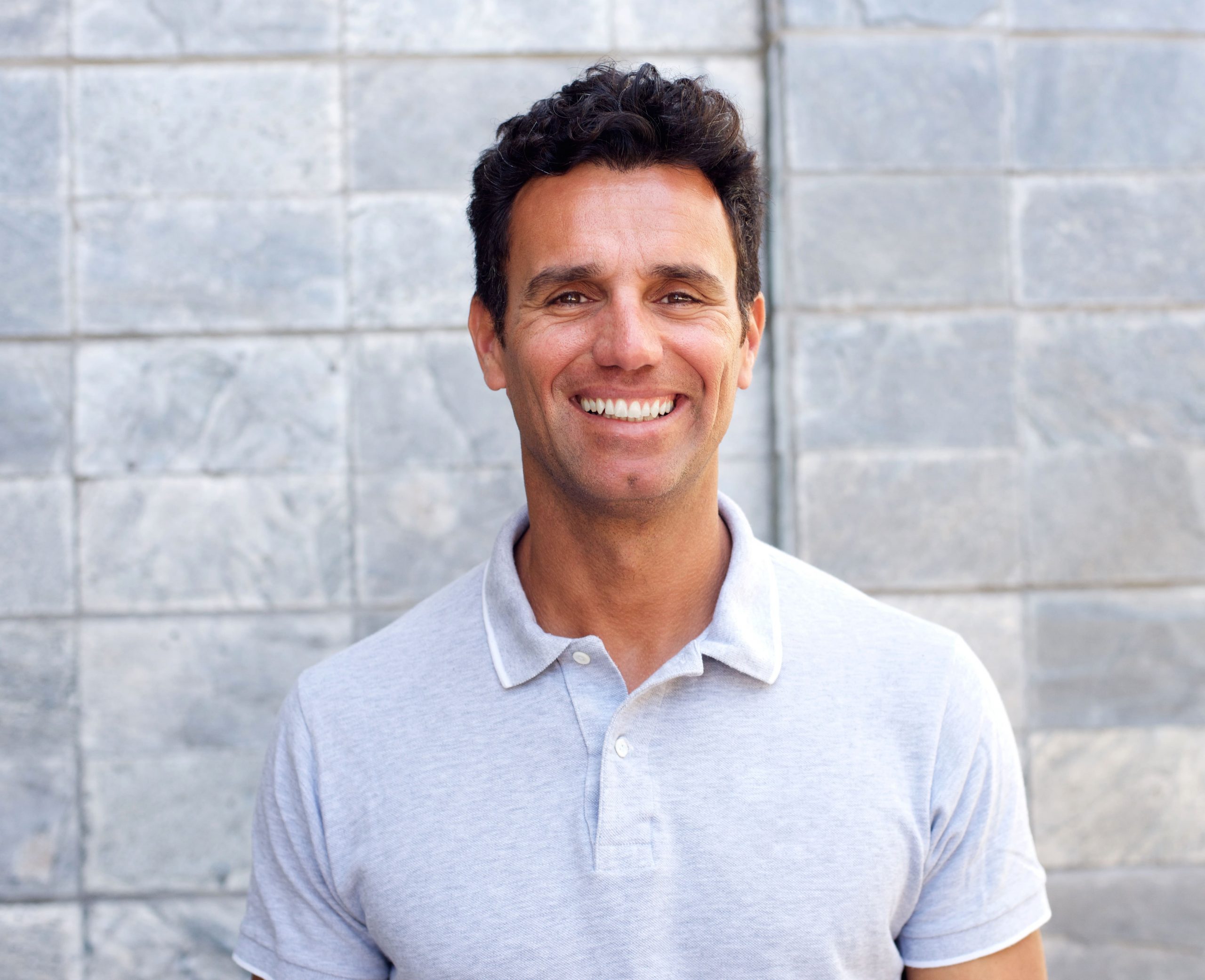
You will realize that your thoughts don’t paint a true image of reality.
Your reality is made of your values and your beliefs.
Join the Conversation
We’d love to hear what you have to say.
Get in touch with us on Facebook Group and Twitter.
10 Success Stories You Might Have Missed
There comes a moment in everyone’s life when we ask ourselves What is my mission? What am I supposed to do to feel accomplished?
Some figure it out very early on while others bounce from job to job changing directions several times until they find themselves on the right path.
Life is a self-discovering journey. We discover what our talents and our abilities are and we learn how to best use them to achieve our mission.
We designed the Success Stories category of our blog to provide you, our viewers with stories of successful entrepreneurs. Their journey is inspirational and can serve as an example for anyone looking to make a difference and change the world for the better.
In the past months, I reached out to every entrepreneur in these stories and invited them to share their mission with us.
If you have subscribed to receive website notifications, you may have read them – they are published on Thursdays.
If you are not a subscriber yet, it’s easy to become one: just click the red notifications balloon.

For those of you who missed our Success Stories, here is a wrap up of our first ten articles each showcasing an entrepreneur and their journey.
Here are 10 success stories that you might have missed:
1. Alex Govoreanu – Exploring Games With Questo
Are you bored with going to the same tourist attractions?
Do you want to discover exciting places while visiting a new city?
There’s an app for that – it’s called Questo.
Find out how Alex Govoreanu, co-founder of Questo came up with this idea.
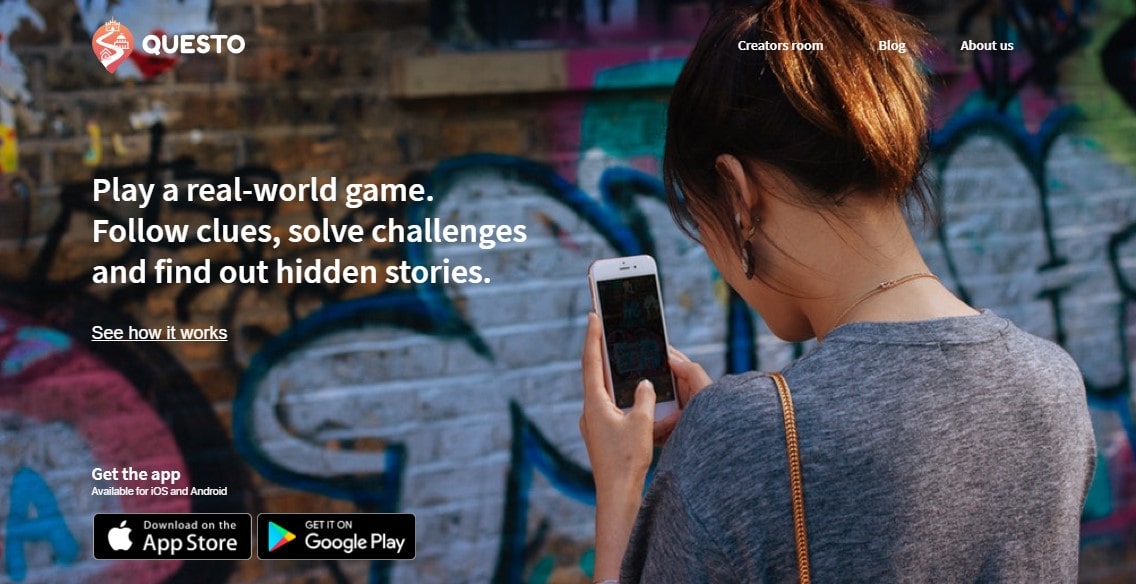
2. Mihai-Toader Pasti: Building The Homes of the Future at EFdeN
The future may hold many surprises for mankind but one thing’s for sure: our homes will continue to be important to us.
How will our future homes look like?
Mihai-Toader Pasti has been designing and building greenhouses for the past nine years. Discover where his journey began and where will it lead him.
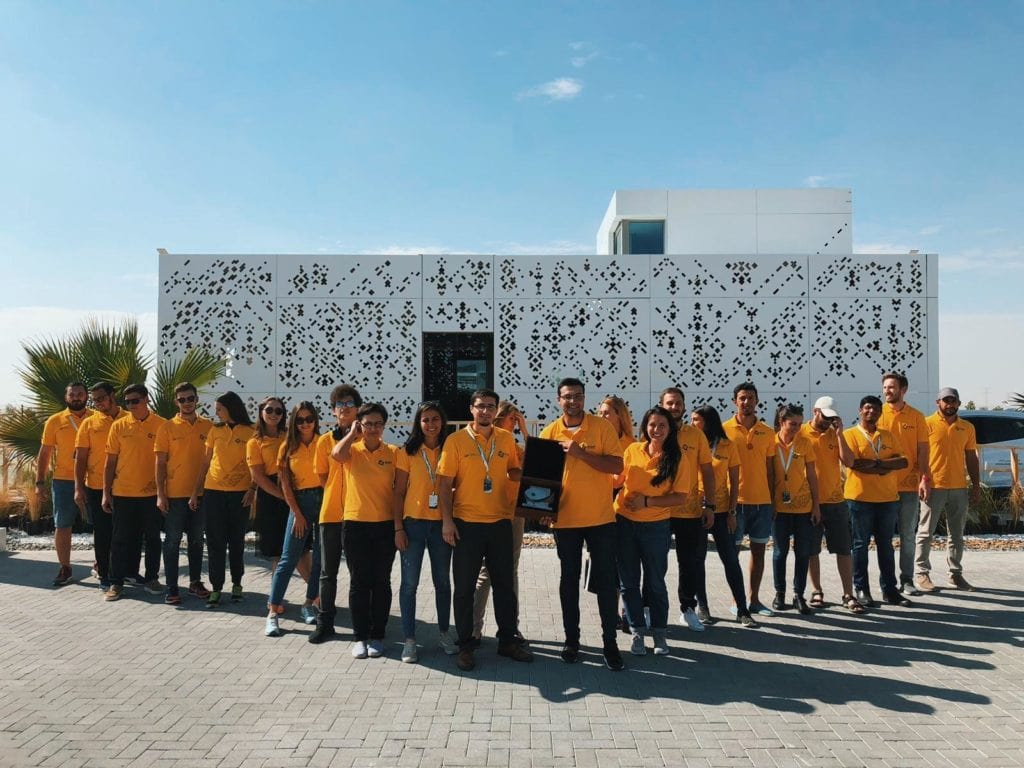
Echipa EFdeN attending Solar Decathlon Dubai 2018 / business-review.eu
3. Mădălin Preda (Deqod): On Leadership and Technology
Today’s technology is about AR/VR, Artificial Intelligence, bots, IoT (internet of things) and Blockchain.
Digital innovation empowers thought leaders to unlock greater profitability through strategic technology development.
Find out how Madalin Preda helps his clients achieve their goals through custom software.
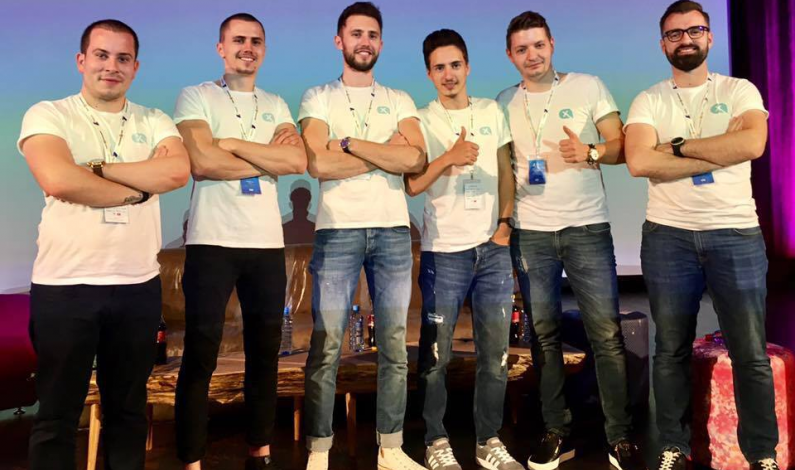
Madalin Preda / startupcafe.ro
4. Javier Goyeneche (ECOALF) – Turning Plastic Sea Waste Into Fashion
Human civilization has known great progress in the last century and technology developments are happening faster than ever before.
But our achievements have come at great costs to our environment: heavy pollution is harming our planet.
Javier Goyeneche, co-founder of Ecoalf has made his mission to clean our planet’s oceans of plastic waste. Discover his story.
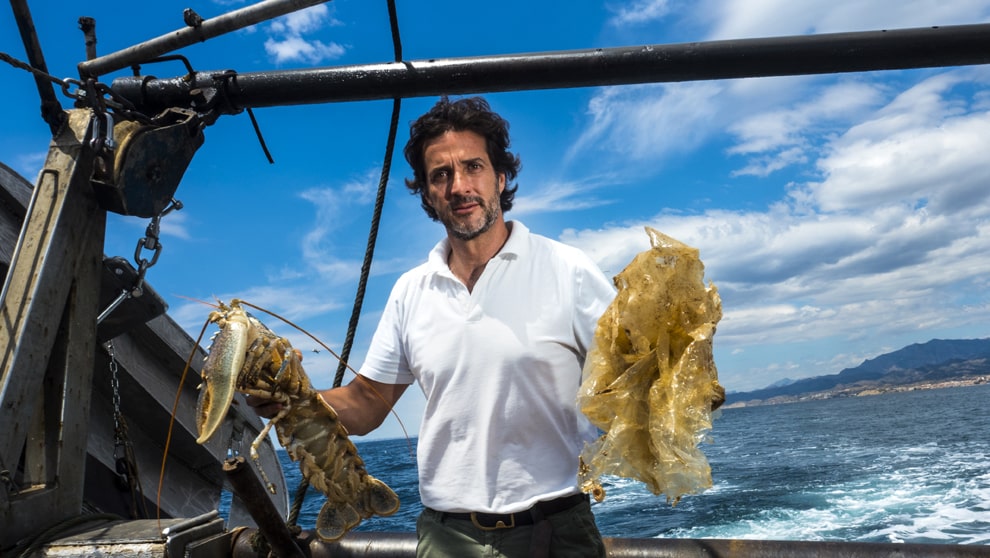
Javier Goyeneche / mundotextilmag.com.ar
5. Diana Miron (JSLeague) – Changing The World One Block Of Code At A Time
Are you familiar with the saying There is strength in numbers? Communities are powerful; their strength lies in numbers but also in unity.
A leader’s main purpose is to build strong communities around one goal. And that’s exactly what Diana Miron, co-founder of JSLeague has achieved. Read her story.
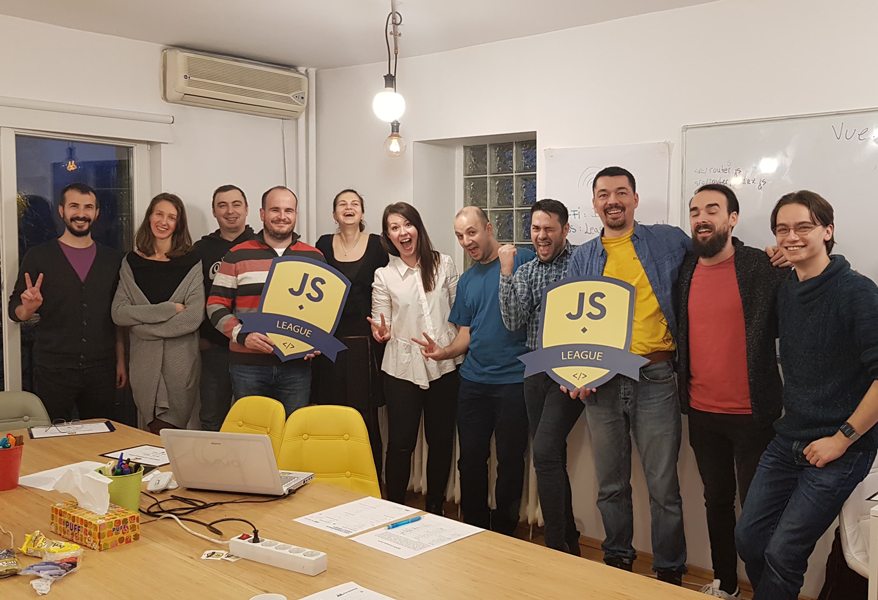
Diana Miron and the JSLeague team / jsleague.ro
6. Anna Lowe (Smartify) – Using Tech To Enhance The Way We Experience Art
Ever since the first cave paintings, mankind expressed itself through art. The pervasiveness of technology today had some of us state tech is responsible for the decreasing number of museums visitors all over the world.
Anna Lowe believes it is possible to use tech to help museums.
Discover how Anna and her team at Smartify plan to revive people’s interest in museums.
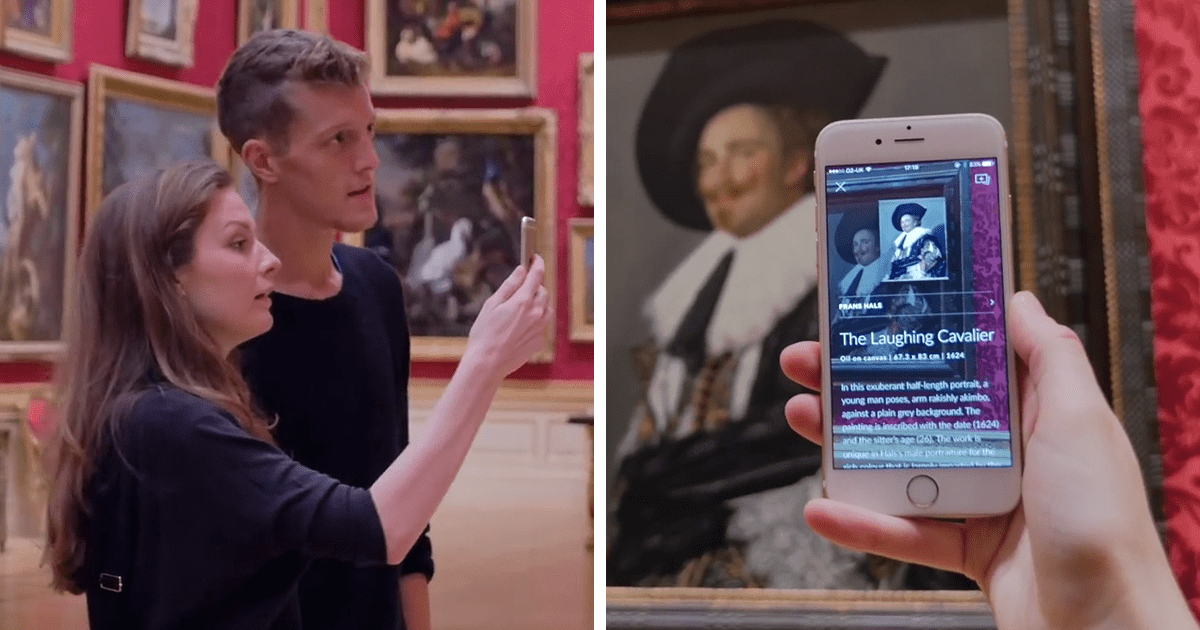
Smartify / demilked.com
7. Marius Istrate (UiPath) – Success Is Being Open By Default
As of April 2019, UiPath is valued at $7 billion which makes it one of the highest values enterprise software companies in the world and a leader in the robotic process automation industry.
Discover what makes UiPath so amazingly successful.
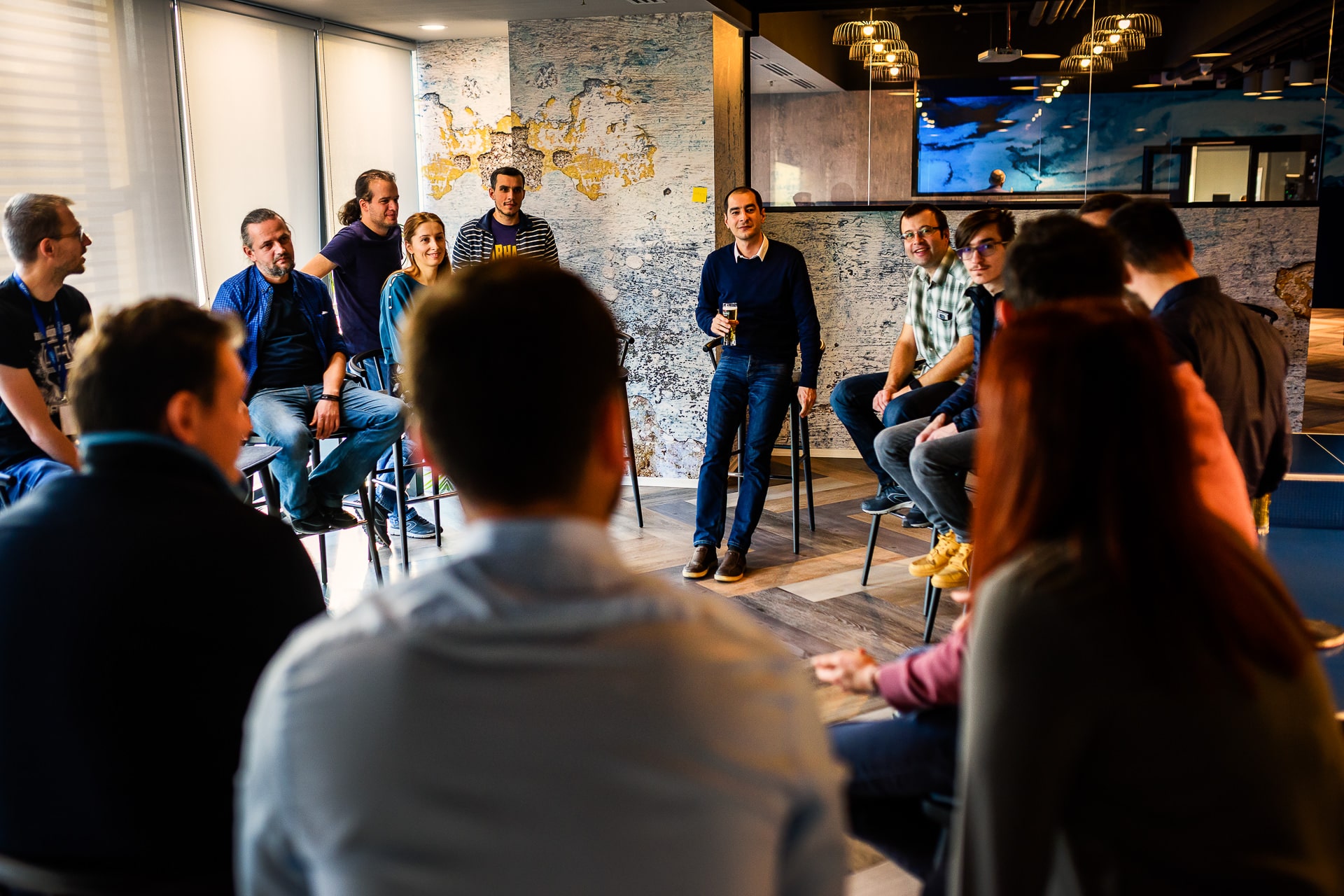
uipath.com
8. Cristina Aleixendri Munoz (bound4blue) – Bringing Sustainability To The Shipping Industry
The shipping industry is one of the highest consumers of natural resources while producing an unsustainable amount of pollutant emissions.
Through creativity, innovation and engineering, Christina and her team offer a wonderful solution which is elegant by design, highly efficient and also clean and sustainable.

bound4blue.com
9. Henrik Hagemann (CustoMem) – Cleaning Wastewaters With An Innovative Solution
Our civilization has thriving cities. Modern developing cities attract people because they provide them with many opportunities for a better life.
Unfortunately, urban life comes with various challenges such as cleaning wastewater.
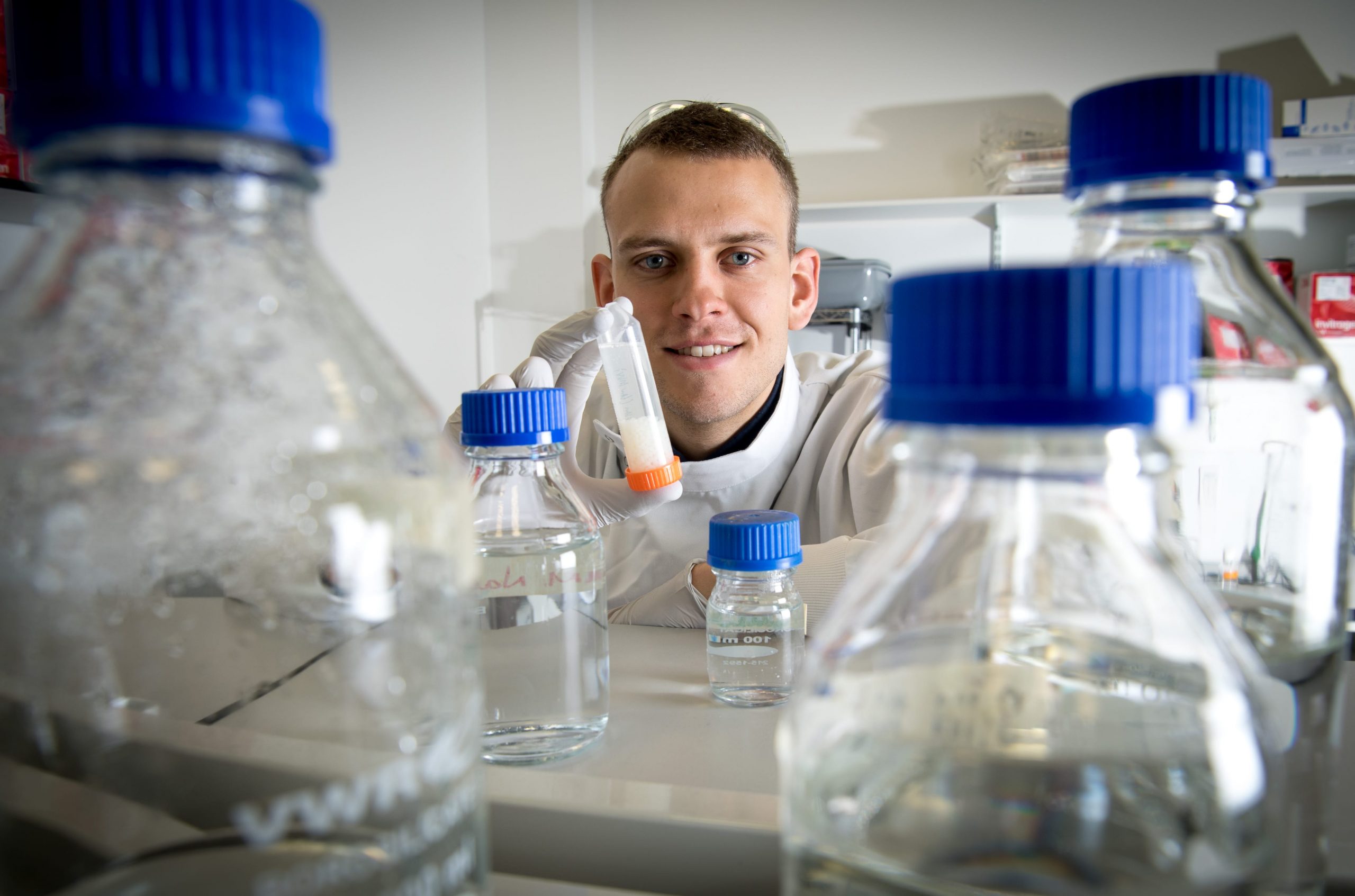
Henrik Hagemann / customem.com
10. Briac Barthes – Driving Change Through Social Entrepreneurship
Social entrepreneurship is about recognizing social problems and finding solutions to alleviate those problems and trigger social change.
Briac Barthes has dedicated his life to supporting people to get out of poverty.
Discover how Briac empowers the people in Tanzania through his Iron Battery.

Briac Barthes and David Lambelet, co-founders of hiLyte showing how the Iron Battery is working/tdg.ch
Join the Conversation
We’d love to hear what you have to say.
Get in touch with us on Facebook Group and Twitter.
3 Robots Shaping Our Future
Our present is technology-driven.
Our future will be shaped by technology.
And robots will be a major part of it, there’s no doubt about it.
Here are 3 robots making history today while preparing us for the future:
1. Mini Cheetah – the first four-legged robot to do a backflip
Mini Cheetah is a robot designed and built by an MIT team of researchers. It is a smaller version of Cheetah, a larger robot built by the same team.
Mini Cheetah is only 20 pounds heavy and displays a wide range of motion. It is very robust, doesn’t break easily and overall dynamic.
The small robot is fitted with 12 motors the size of a jar lid, three for each leg. The researchers designed it to be lightweight, high-torque and low inertia which allows the robot to execute manoeuvres fast, without breaking any parts.
It is capable of moving very fast, it can bend its legs, it can walk upside down, it can jump in the air, it can switch and stretch as if doing yoga and now do 360-degree backflips.
The robot is able to do a backflip thanks to a program which the team wrote in order to test its performance.
The robot’s designers plan to build 10 more mini cheetahs and then loan them to collaborating groups. The purpose is to give other robotics research engineers the opportunity to come up and test new ideas.
That’s how you accelerate research.
Sangbae Kim, associate professor of mechanical engineering
2. Handle, the robot doing warehouse work
Handle is designed and built by Boston Dynamics, a company which began as a spin-off from the MIT. Handle is one of the four robots developed by the Boston Dynamics team which include SpotMini, Atlas and Pick.
Handle is a robot able to perform various box handling tasks in the warehouse. It is 2 meters high, 105 kg heavy, it is fitted with 10 cameras, it has 10 joints and can lift 15 kg.
A counterbalancing system provides the robot with power and agility which allows it to perform difficult manipulation tasks.
3. Atlas, the robot doing parkour
Atlas is the latest humanoid robots developed by Boston Dynamics.
It is 1.5 meters high, 75 kg heavy, can handle a 11 kg payload, it has stereo vision and 25 joints.
The robot is fitted with a control system which coordinates its arms, torso and legs. It is able to manipulate objects and travel on rough terrain thanks to its amazing balancing system.
Into the future
Science-fiction movies envision a human civilization where robots perform automated labor, assist humans with various tasks and minor jobs and keep them company when needed.
These three robots and others like them are amazing achievements; they represent the building blocks which allow brilliant researchers and scientists to take their work further.
The future will grow from the seeds we plant today.
Join the Conversation
We’d love to hear what you have to say.
Get in touch with us on Facebook Group and Twitter.
Building Homes For Your Wellbeing – The WELL Building Standard
This article is about the latest building standard which focuses on protecting your wellbeing as well as the environment.
Homo sapiens built out of necessity. The first constructed structures were raised in the New Stone Age and were in the form of tents and shelters made of mammoth ribs, bamboo, clay and other locally available natural materials. These structures were designed to suit people’s basic needs for protection from the elements and left no traces in the environment.
The Early Ancient Civilizations – Building To Last
The early ancient civilizations – the Egyptians, the Chinese, the Mesopotamians – were the world’s first architects. Their buildings were large structures (i.e.: the pyramids), designed to last over centuries and were a testament of their culture and civilization. These structures are amazing feats of engineering and changed the face of the world forever.
The ancient civilizations died and were replaced by advanced modern civilizations. Technological developments influence our lives, our jobs, the homes we live in and the buildings we work in. But these changes aren’t always good for our health.
The Sick Building Syndrome
In the 20th century, the sick building syndrome was identified. The sick building syndrome is a medical condition where people in a building suffer from symptoms of illness or feel unwell for no apparent reason.
The symptoms include a wide range of conditions such as headache, eye, nose, and throat irritation, fatigue, dizziness and nausea.
This syndrome is linked to various causes: inadequate ventilation, deteriorating fibreglass duct liners, chemical contaminants from indoor or outdoor sources, and biological contaminants, air recycled using fan coils, traffic noise, poor lighting, molds. In short – our buildings were harming us.
Aside from us, our buildings and construction have a detrimental impact on the environment. According to research, the construction sector contributes to 23% of air pollution, 50% of the climatic change, 40% of drinking water pollution, 50% of landfill wastes and accounts for 40% of worldwide energy usage, with estimations that by 2030 emissions from commercial buildings will grow by 1.8%. (source)
Building to Protect the Environment
Our world has limited resources. It’s up to us to protect it. It’s up to us to design and build structures that don’t harm our environment and our health.
That’s why new standards of construction were developed during the 1990s such as BREEAM and LEED.
Learn more: Mihai-Toader Pasti – Building The Homes of the Future at EFdeN
These standards indicate that a building has achieved a certain level of environmentally-conscious design. They help building owners and operators to be environmentally responsible and use resources efficiently.
The next step in the sustainable or ecological architecture movement is designing for people’s wellbeing.
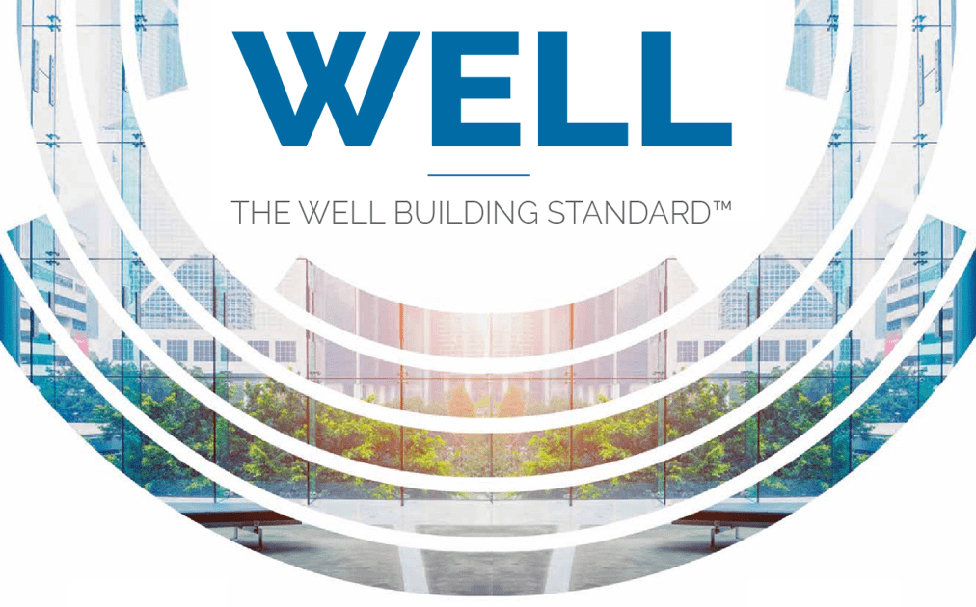
image: agda.com.au
The WELL Building Standard
The WELL Building Standard illustrates this goal and was developed in 2014 by the International WELL Building Institute.
The WELL Building Standard is the premier standard for buildings, interior spaces and communities seeking to implement, validate and measure features that support and advance human health and wellness.
The WELL Building Institute
The goal of the WELL Building Standard is to help architects create healthy buildings, which actively support their occupants’ health and well-being.
WELL was developed by integrating scientific and medical research and literature on environmental health, behavioural factors, health outcomes and demographic risk factors that affect health with leading practices in building design, construction and management.
According to WELL, buildings should be functional and comfortable, built sustainably, contribute to their occupants’ health and wellbeing and be able to adapt to their needs.

image: greenengineer.com
The standard covers seven core design aspects: Air, Water, Light, Nourishment, Fitness, Comfort, and Mind.
Here is how the WELL Building Standard contributes to the health and wellbeing of your family:
1. Air
The WELL Building Standard™ establishes requirements that promote clean air and reduce or minimize the sources of indoor air pollution.
2. Water
The standard promotes safe and clean water through the implementation of proper filtration techniques and regular testing in order for building occupants to receive an optimal quality of water for various uses.
3. Nourishment
According to the standard, fresh and wholesome foods are required, unhealthy ingredients are limited and better eating habits and food culture are encouraged.
4. Light
The WELL provides guidelines that minimize disruption to the body’s circadian system, enhance productivity, support good sleep quality and provide appropriate visual acuity.
5. Fitness
It promotes the integration of physical activity into everyday life by providing the opportunities and support for an active lifestyle and discouraging sedentary behaviours.
6. Comfort
The standard establishes requirements designed to create distraction-free, productive and comfortable indoor environments.
7. Mind
It optimizes cognitive and emotional health through design, technology and treatment strategies.
For an in-depth presentation of these concepts, go to The International WELL Building Institute.
Join the Conversation
We’d love to hear what you have to say.
Get in touch with us on Facebook Group and Twitter.
How Mindfulness Can Help You Become a Better Leader
If you are looking to better yourself as a leader, mindfulness is vital. Read on to discover how mindfulness can support your journey to becoming a great leader.
What is mindfulness?
Mindfulness is a state of consciousness consisting of awareness and attention.
Dr Matthew Lippincott
Self-awareness is a skill that you can develop which has a positive impact on 90% of your results. It is the most critical skill for leaders to develop because it affects every aspect of leadership. And still, there are very few leaders who intentionally train and improve on their self-awareness on a daily basis.
In her 2018 self-awareness study, Dr Tasha Eurich found that only 10%-15% of the respondents are actually self-aware.
Why is it so hard for leaders (and anyone else for that matter) to be self-aware?
Because breaking old habits and developing new ones is very challenging.
Mindfulness is looking in the mirror and having an objective, third-person awareness of our own minds and bodies.
By definition, mindfulness training is self-awareness training, it is a systematic way of improving self-awareness.
The latest research in the field of neuroscience shows that mindfulness changes the function of the brain and its physical structure in ways that help us to be more self-aware.
We don’t need anything outside of ourselves to be happy.
Matt Tenney, Mindfulness speaker and author
Mindfulness is a trainable skill
Mindfulness is a trainable skill. You can train your mind to be happy regardless of what happens to you. It’s about giving up your own short-term self-interest so that you can help other people.
Leadership is about creating a safety zone for your employees to thrive and develop so your organization can thrive and develop.
But how can you create safety for your people if you are not able to bring safety to your mind?
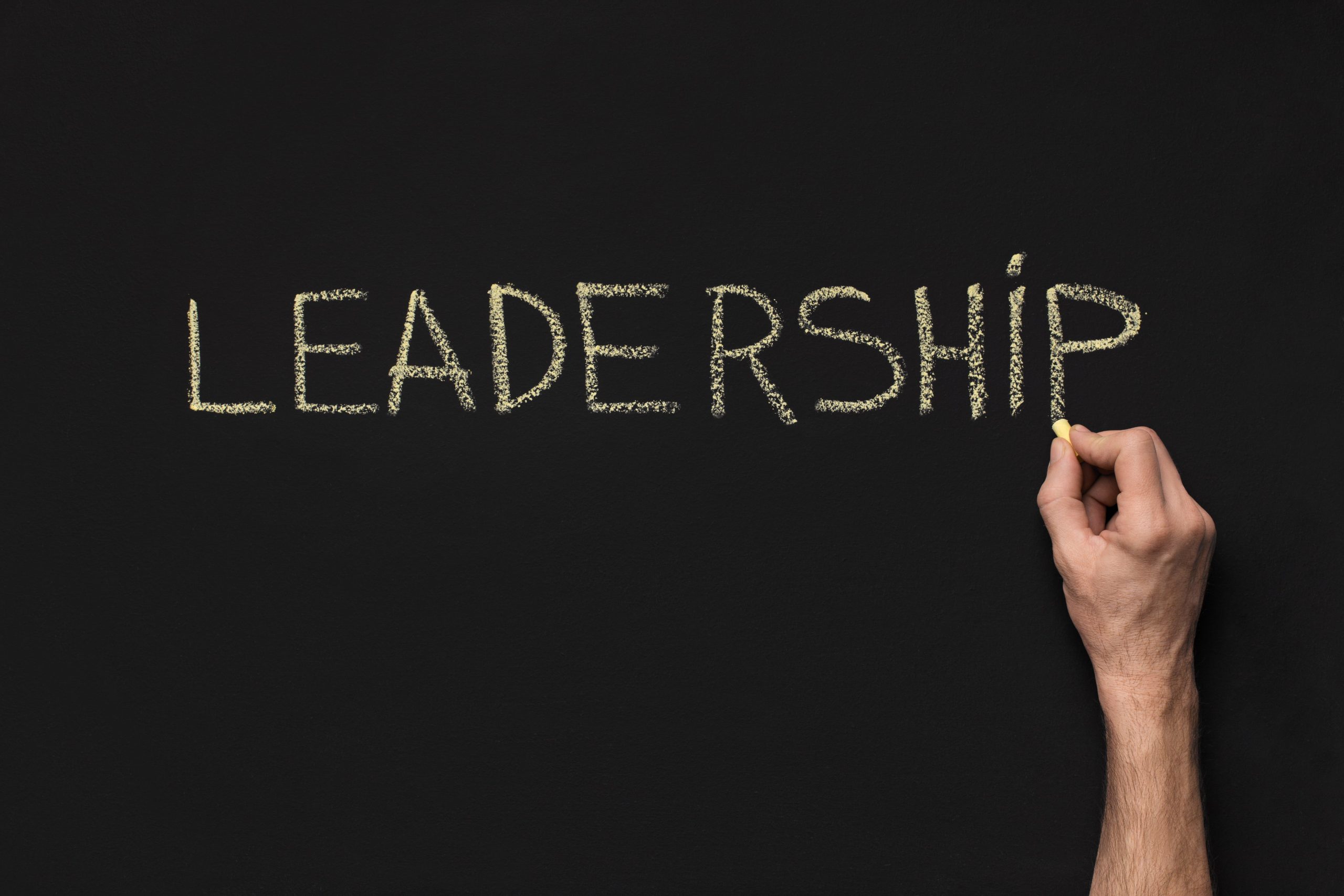
How mindfulness can help you become a better leader – 4 benefits
Here are four important benefits of developing high levels of mindfulness as leaders:
1. Improving your executive decisions
As a leader, you may be prompted to make important decisions every day, decisions which affect your employees’ lives, their productivity and results.
No leader intends to make poor decisions. As a matter of fact, experts found that leaders don’t make bad decisions because they lack knowledge. They make bad decisions because of cognitive bias.
Cognitive bias means a way of thinking which causes a rational person to make an irrational or bad decision.
Mindfulness allows you to become aware of your thoughts and take an objective approach: you can take your thoughts into account if they are productive or let go of them if they are negative or toxic. This helps you make better decisions.
2. Making the other person feel like a million bucks
Have you ever talked to a person who was not paying attention to you, looking around the room or staring at you with a blank look upon their face? Or worse, taking their smartphone and browsing on the internet.
It’s not only rude, but it’s also hurtful. It makes you feel like you don’t matter to that person and he/she doesn’t care about you.
Have you experienced the other way around? Have you ever talked to a leader who gave you their full attention, listened to you intently, asking clarifying questions?
It makes you feel like you matter and you are worthy. It’s uplifting and inspiring. You feel like you could follow that person to the end of the world and help him achieve his dream. It’s very powerful and it is what leadership should feel like.
Such a level of attention and commitment can only be achieved through mindfulness. It means being present at the moment in a non-judgemental way.
3. Empathy
Improving your empathy is important if you are a leader.
It means being open and hearing what your employees need to thrive and how you can help them get it. This way you are setting the required environment for your employees to be productive and bring in positive results. It’s what makes for good leadership.
4. Personal growth
Are you having toxic thoughts?
Is your mind constantly driving you towards your past?
Do you feel compelled to pursue perfection?
If your answer is Yes then you have just taken the first step on the path to mindfulness. Being aware of your thoughts, negative or positive means you have acquired objectivity, therefore, you are now in a position to address your thoughts and change your frame of mind.
It’s about taking control of your mind and not allowing your thoughts to distract you.
What comes next is personal growth and development.
Join the Conversation
We’d love to hear what you have to say.
Get in touch with us on Facebook Group and Twitter.
Return On Experience (ROX) Is The New Return On Investment (ROI)
You may be familiar with Return on Investment as a metric but do you feel you need an additional performance measurement tool which illustrates more accurately the changes in our world with a direct impact on your business?
PwC offers you the answer to your question – Return on Experience.
What is ROI?
Return on Investment (ROI) is a performance measure used to evaluate the efficiency of an investment. To calculate ROI, the benefit (or return) of an investment is divided by the cost of the investment. The result is expressed as a percentage or a ratio.
ROI is a financial metric of profitability widely used in business. With the rise of digital and social media, business executives may find it difficult to calculate the ROI of their company’s marketing and advertising efforts on digital platforms.
What’s the ROI of social media?
Some digital experts believe that due to its human nature social media cannot be measured using a business-focused tool. Three years ago Gary Vaynerchuk famously replied to a business executive asking him repeatedly about the ROI of social media with What’s the ROI of your mother?
Other digital experts support the idea of looking at social media from a different standpoint – that of soft leads generator which I believe is more accurate. Marketers should find where social media fits best in their company’s funnels so that their efforts translate into results that can be measured.
Consumers have power over brands
Our world is changing; it’s not technology leading the change, it’s the people. It’s not the businesses running the show, it’s their consumers. They have power over brands, not the other way around.
According to PwC’s 2019 Global Consumer Insights Survey, it’s time to include another metric in addition to the traditional ROI. It’s the consumer-centred metric – the Return On Experience or ROX.
We need to introduce another metric, one with a laser focus on customer experience: return on experience. Whether your organisation is in the business of household goods, health services, selling cars or financial services, delivering a superior experience will be what makes you a winner.
PwC – 2019 Global Consumer Insights Survey
What is ROX?
The Return On Experience (ROX) is the metric with which marketers measure the purchase experience of their consumers.
Because consumers today are so discerning and powerful, it’s our perspective that most organisations need to invest far more in customer experience (CX). Measuring ‘return on experience’ (ROX), will help you understand your earnings on investments in the parts of your company directly related to how people interact with your brand.
John Maxwell, PwC’s Global Consumer Markets leader
Why should you include ROX in your measurement list?
Here are 10 of the report’s main findings which are good reasons for your company to include ROX as an additional measurement metric:
- 31% of consumers buy online weekly or daily;
- 24% of consumers shop on smartphones more often than on PCs – the first year in the decade PwC has been conducting this study that mobile phones were used more than other digital devices;
- 51% of respondents paid bills and invoices online;
- 51% transferred money online;
- 54% are streaming movies and TV 2x a week or more;
- 39% of Gen Z respondents said they go directly to social media for information compared with 25% overall;
- Mobile payment has been growing steadily since 2018, with China leading the way (86%) followed by Thailand (67%), Hong Kong (64%) and Vietnam (61%);
- 75% of consumers are using their mobile phones for health information;
- 46% of consumers would like to have an autonomous vehicle today or would consider one in the future;
- 35% of the survey’s respondents said they choose sustainable products to help protect the environment, 37% look for products with environmentally friendly packaging, and 41% avoid the use of plastic when they can.
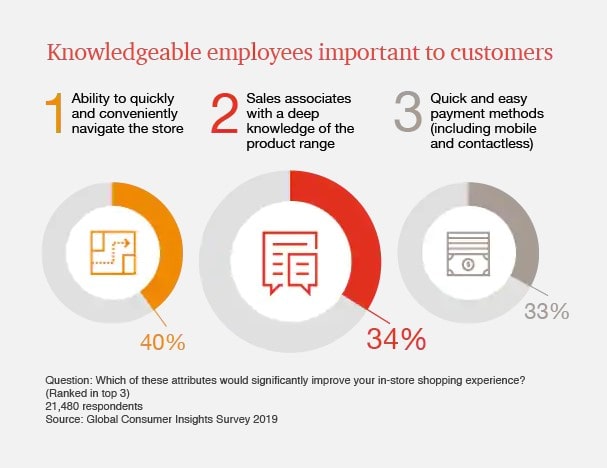

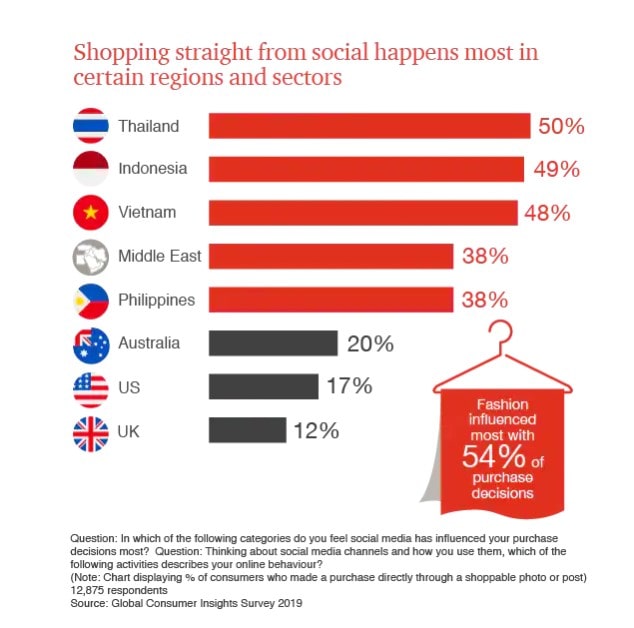
Now that you’re convinced of the power of your consumers and the importance of the customer experience, let’s see what factors contribute to great customer experience.
5 factors who drive great customer experience:
1. Less friction
Your company should aim towards a frictionless purchase journey. A purchase journey which eliminates friction as much as possible encourages your customers to buy more frequently and spend more money.
Amazon is a great example of a frictionless purchase journey.
2. Digital voice assistants
9% of consumers said they used voice technology to shop online weekly or more frequently. Using digital voice assistants makes it easier for consumers to buy. The voice technology contributes to the frictionless purchase experience.
Learn more: What Voice Search and AI Mean For Your Business
3. BOPUS
BOPUS is the acronym for buy online and pick up in store. BOPUS requires previous customer training but it works because it is convenient.
4. Blended experiences
A blended purchase experience means augmenting your customer’s in-person interaction with digital content before, during and after that interaction.
5. Employee experience (EX)
Last but not least, the employee experience is vital to creating excellent customer experiences. It means your company should invest in and improve the employee experience (EX) because EX has a big impact on customer experiences.
Learn more: Keeping Your Employees Happy Is More Than A Higher Paycheck
Are you looking to improve your ROX?
Based on the PwC survey results, here are 6 recommendations on how your company can improve its Return on Experience:
1. Fuse CX and EX
Companies that invest in and deliver superior experiences to both consumers and employees are able to charge a premium of as much as 16% for their products and services.
2. Build communities with a purpose;
3. Build on discreet moments along the customer journey;
4. Understand your customers based on their behaviours;
5. Treat consumers’ data with respect, and deliver value in exchange for it;
6. Win the trip.
Win over customers on-premise or via e-commerce by understanding what they are trying to experience and then making it easier for them to accomplish that goal.
Design your ROX-focused framework
What should your ROX-focused framework look like?
- Identify the things your company does exceptionally well;
- Make sure your IT systems, data infrastructure, business processes and performance metrics are aligned with those core capabilities;
- Identify your company’s ‘critical few’ behaviours; these behaviours are the ones that are most important to creating and delivering excellent customer and employee experiences;
- Quantify your progress in building these behaviours across functions, business units and geographies;
- Use your metrics to gain deeper insights into what matters most to customers;
- Quantify what’s most important along the path to purchase and what factors are most influential in driving customer behaviours.
Join the Conversation
We’d love to hear what you have to say.
Get in touch with us on Facebook Group and Twitter.
When Authenticity is Your Brand’s ….Brand
Is your brand authentic? Is it true to its values and does it express them truthfully?
Read on to discover three brands whose names are synonymous with authenticity.
In today’s consumer-driven environment, brands that are authentic and true to their values earn their customers’ trust and increase their business. According to various reports, a great majority of customers around the world expects brands to be honest and authentic.
Let’s see how three brands express authenticity when talking to their customers!
1. Aviation Gin / The Process
In February 2018, Ryan Reynolds, the Hollywood star famously known for his Deadpool movies acquired Aviation Gin, an American boutique gin distillery. While he stated he won’t be involved in the gin-making process, he assured his shareholders and the customers that he will have a say in the marketing, sales and distribution processes. I can’t express any opinions regarding sales and distribution, but I must say it would have been a surprise if he didn’t get involved in the marketing and advertising of his new spirited company. After all, he knows a thing or two about creating buzz and earning brand awareness – Deadpool campaigns are lessons in advertising virality that every advertising professional should study.
If you follow Ryan Reynolds on social media, you are already familiar with his dry sense of humour. His Deadpool character is an extension of Ryan’s personality: the same tongue-in-cheek witty but kind humour.
Aviation Gin is no exception: the brand’s communication style is all Ryan. He stays true to himself and this translates into brand authenticity.
In this ad, Ryan takes a less traditional approach to the standard How it’s done video essentially poking fun at other spirits producers.
The ad is nominated for the People’s Voice 2019 Webby Awards in the Video Ad Longform category. You can vote for it here.
2. The Dollar Shave Club.com / Our Blades Are F***ing Great
Dollar Shave Club is an American company that delivers razors and other personal grooming products to customers by mail on a monthly basis. The company was founded in 2011 by Mark Levine and Michael Dubin after expressing their frustrations with the cost of razor blades.
In 2012 the company uploaded on its YouTube channel a video entitled Our Blades Are F***ing Great featuring CEO Michael Dubin. In this video, Michael talks about his company’s service in a nonchalant and sarcastic manner. No expensive interiors, no dreamy locations, nothing fancy just himself talking in his warehouse.
The video is straight to the point and highly authentic; it prompted 12,000 orders in a two-day span after it was released, and has received over 26 million views to date.
The video won “Best Out-of-Nowhere Video Campaign” at the 2012 AdAge Viral Video Awards and the 2013 People’s Choice Webby Award in the Fashion & Beauty category.
3. Patagonia – Artifishal / The fight to save wild salmon
Patagonia is an American clothing company that markets and sells outdoor clothing. The company was founded in 1976 by Yvon Chouinard, an accomplished rock climber.
Patagonia is an activist company which commits 1% of its annual net revenue to nonprofit charity organizations focused on conservation and sustainability. But the company does more than support these organizations financially.
Over the years Patagonia has built a strong community of activists and acted upon its mission: to save our home planet.
Here is the company’s campaign to fight for the future of wild salmon and the environment that supports this fish.
Join the Conversation
We’d love to hear what you have to say.
Get in touch with us on Facebook Group and Twitter.
Yam Regev (Zest) – Supporting self-learning marketers worldwide
Yam Regev is the co-founder of Zest, a knowledge-building platform for self-learning marketers worldwide. The platform is based on content sharing from its users.
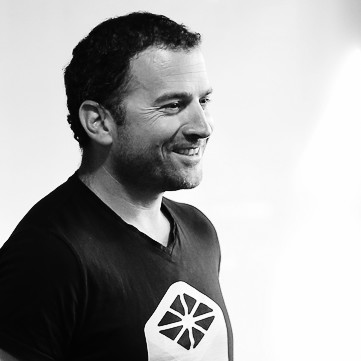
Yam Regev, co-founder @Zest.is / linkedin.com
What sets Zest apart from other knowledge-based platforms is that the suggested links are going through a multi-step content moderation process which ensures only the best content is approved.
I have only three Chrome tabs on my laptop and Zest is one of them. I discovered Zest shortly after its release in 2017 and I’ve been using it ever since. I love it! It’s my ace in the sleeve and my go-to resource for the best articles on everything marketing, SEO, branding etc.
Although very busy, Yam was kind enough to answer my questions on Zest and his entrepreneurial journey.
Enjoy!
1. Zest released a new-tab Chrome extension and now you are also releasing a knowledge-building mobile app. There are currently over 20.000 weekly active members operating around the world. How did Zest start and what is the story behind it?
Zest started as a solution to a problem that I experienced as a self-learner.
I wanted to continually improve my skills to advance my marketing career but I couldn’t spend my time taking long classes learning things that would be out of date by the time the course was completed.
I’m also dyslexic, so traditional coursework really doesn’t work well for me. I liked reading blogs and other content produced by members of my industry and I didn’t want to spend my days looking for relevant content amid all the low-quality fluff.
What I needed was a place where I could find knowledge-building content that I knew would be high-quality. I wanted the kind of content your professional peers share with you via email or through Slack–the good stuff.
But, of course, having to rely on a small circle of professional peers to deliver the content I needed to keep growing as a marketer wasn’t ideal. That’s how the idea of Zest was born. What if it wasn’t just my circle of peers, but a great community of marketing professionals from around the world who were sharing and recommending knowledge-building content: A tribe of self-learners.
That’s what Zest is. It’s a community–a tribe–of marketers who are dedicated to continually improving as professionals and are willing to share the great content they discover to help others improve too.
How did this idea become a reality? I was fortunate to have a good friend, Idan Yalovich who shared my vision. Idan is an amazing coder and one of the best tech & R&D pros in Israel. He and I co-founded Zest together and he brings the AI magic to Zest’s content discovery process.
When we first released the open alpha version of Zest we didn’t see immediate phenomenal growth. In fact, during the first few weeks, we were a little worried. But we persevered. Zest and the method of delivering content via a new-tab extension on Chrome were new.
It took our users a little time to adapt. But once they did, they continued to use the extension and told their friends about it. Product-market fit + network effects for the win! We continued to nurture that core community of users through personal outreach and by actively listening to their feedback.
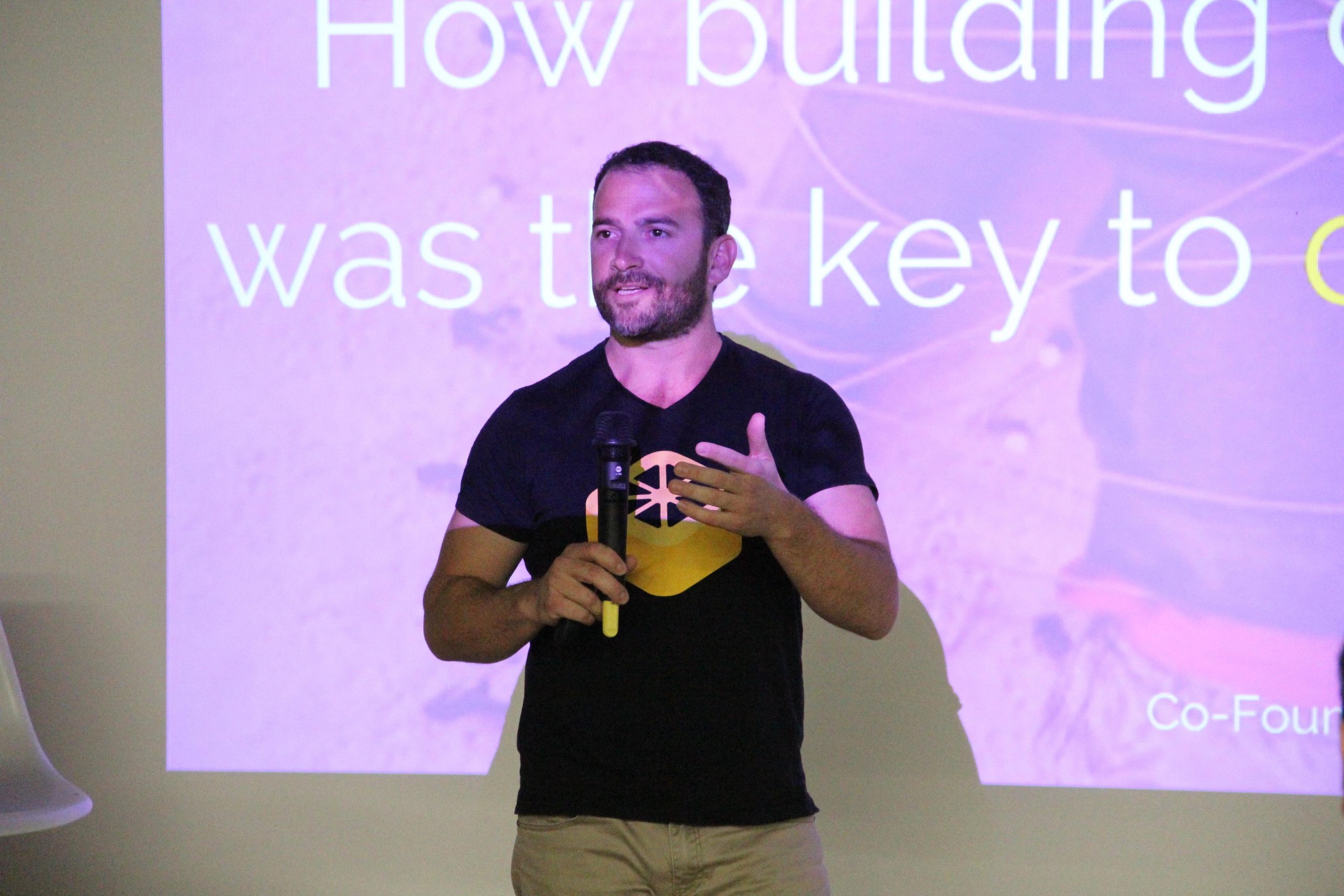
2. There are many challenges innovative startups like Zest must face. Name 3 challenges that you and your team confronted with and how you managed to overcome them.
Achieving a product-market fit is one of the first hurdles any startup must overcome. Because of our industry knowledge and discussions we had with other marketing professionals, we were relatively confident that our product will solve a problem that many of our users shared.
But, we still had a few stumbles along the way. For example, our first attempt at a newsletter performed well in terms of KPIs. People opened it, but it didn’t do what our brand promised. It didn’t add value to their personal learning journey. So, after several months, we cancelled our newsletter.
That’s not the end of the story, though. Earlier this year, we released the Zest UpSkill newsletter. This version of our newsletter was carefully tailored with product-market fit in mind. It provides each member with a personalized knowledge-building experience in the form of a weekly email. Every email includes links to content that are custom selected for the recipient. When a member of the Zest tribe opens their UpSkill, they can expect to find actionable content relevant to their marketing career.
Of course, another challenge nearly every startup will face is funding. To raise funds for Zest, we chose a slightly unusual route. In keeping with our commitment to transparency, we created an investors dashboard and invited people to have a look at our KPIs and other key information. As a result, our pre-seed funding round was able to attract investors who shared our vision.
Despite acquiring this funding, Zest is a bootstrapped startup. We have to continually balance our growth objectives with the demands of our lean structure. One of my roles is to keep a close eye on our monthly burn rate. This requires me to consider the long-term ramifications of each spending decision in addition to choosing how best to achieve our short-term goals.
Finally, founding a company doesn’t always mean that you can immediately leave your old life behind. Idan and I, like many founders, began Zest while still working full-time. But, dividing your focus when working on your startup can be fatal.
After working on Zest part-time from 2016 to 2017, I decided to make the leap to concentrating on Zest full time in late 2017. Idan took the plunge as well.
When you commit 100% to your company it sends a message to your team, your investors, and yourself:
This isn’t a dream or an idea, it is a business and we are in it to succeed.
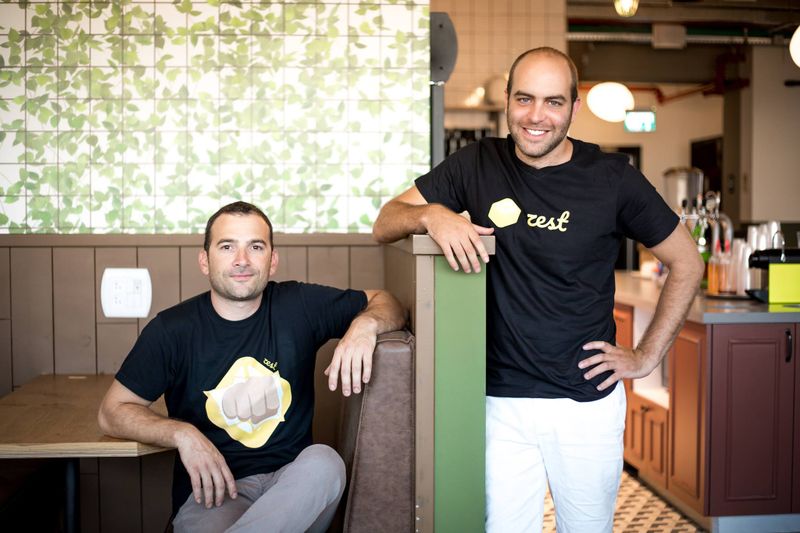
Yam Regev and Idan Yalovich, co-founders at Zest / canva.com
3. Every startup founder is looking for the best strategies to grow and scale their business. What strategies did you implement to grow and scale Zest?
One of the most important things an early startup can do is to focus intently on achieving product-market fit. The faster you can achieve product-market fit the more likely it is that your startup will survive.
I have two pieces of advice for young founders.
My advice for founders is to do things that don’t scale.
For us, that meant not using automation to reach our customers when we first launched Zest. Instead, we got close to them.
Communicate with your customers and potential customers one-on-one, ask for their feedback and gather a deep understanding of their pain points and the language they use to describe their needs. This is how you create a customer-focused product that captures the hearts and minds of your users.

linkedin.com
4. What is the secret ingredient behind Zest’s success?
Without a doubt, the secret ingredient to Zest’s success is the Zest tribe (our users). I am a huge proponent of network effects and the power of community. Zest has managed to achieve its growth because of the strength of our community and their willingness to share their professional knowledge and expertise with their peers.
Paired with the strength of our community is the Zesteam’s determination to always add value. Our newest product, Zest Enlight doubles down on that commitment.
Zest Enlight is a pro version of Zest for mobile. Zest Enlight puts our users in control of their career development. After choosing their preferences, Zest Enlight users will be able to receive custom-selected, knowledge-building content about the marketing topics they choose and on the schedule they select. It takes self-learning and professional development to the next level.

5. What is your advice for the aspiring or new startup founders?
My advice to aspiring startup founders anywhere is to keep learning, strive for continual improvement. Once you have perfected your vision and assembled your team, don’t rest. Continue to upskill, adding new areas of knowledge and expertise to your personal bank of resources. Surround yourself with others who are willing and eager to do the same.
When you bring your idea to investors, be prepared to answer their questions. Do your homework so that you are prepared to answer their questions. And don’t overlook the importance of aligning yourself with advisors, investors and team members whose attitudes and ideals match your company’s culture. It isn’t necessary for everyone involved with your startup to always agree. In fact, a healthy amount of disagreement will help you grow. But, everyone involved with your startup should share the same fundamental beliefs about what you are doing and how you’ll get there.
I also highly recommend that aspiring and new founders take advantage of every opportunity to learn from their peers. Either through face to face meetings or video calls, seek out other founders who have travelled the paths you are headed down and ask for their advice. Other founders understand your passion and the challenges of your journey and there are many who would love to meet with you to share their knowledge.
Join the Conversation
We’d love to hear what you have to say.
Get in touch with us on Facebook Group and Twitter.


